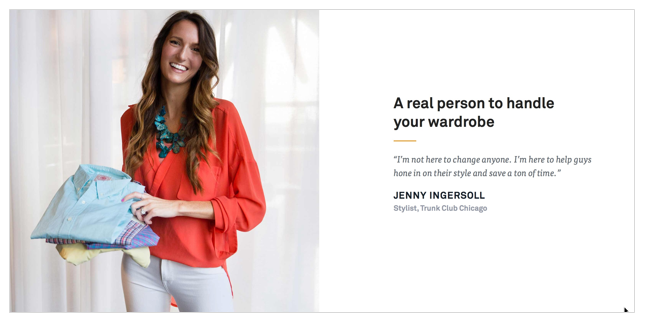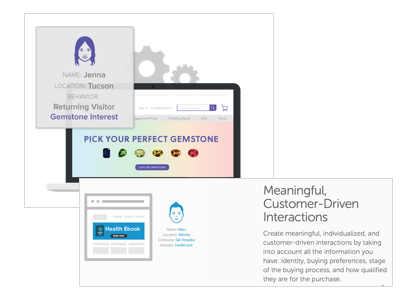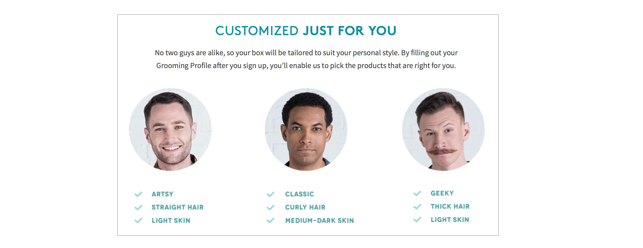
Content has long been the lifeblood of inbound marketing, but the volume has increased to such gargantuan proportions that consumers quickly fatigue even if the content is phenomenal. Time and attention are increasingly limited and experienced consumers are highly trained to tune out irrelevant content. Savvy brands have adapted to the changing landscape by using big data to add relevancy to the customer experience.
We’ve long seen just the tip of the iceberg of personalization (name tokens in emails from any brand you’ve ever engaged with), but simply knowing a name isn’t enough any more. That trick may have worked to catch a consumer’s attention, but it’s been played out and tuned out and marketers must evolve to continue to capture and maintain their audiences interest.
Hulu knows what show you want to watch next (and even starts it for you!). Amazon actively recommends and customizes your entire shopping experience from the data they’ve collected on your shopping and browsing habits to personalize the very concept of a “website.” Brands like Trunk Club have personal stylists that curate wardrobe “trunks” based on your preferences and things you’ve purchased from the “try-on trunk” that are then shipped directly to your front door.
I’m not quite ready to trust someone else to purchase $300 jeans for me, but I completely see the value of having a service that is truly focused on the individual vs. a mass-market mall experience. Plus, Jenny knows which clothes are cool, while I, admittedly, do not.
“Where everybody knows your name…”
As technology gets smarter and datasets grow larger, customers now demand relevancy. If you are not creating a customized and personalized experience your audience will quickly lose interest, or worse, have a negative experience and a negative association with your brand.
New marketing technology tools have matured as marketers need the ability to handle personalization at scale. HubSpot reinvented their CMS (content management system) platform as the COS (content optimization system) which ostensibly transforms every element of your website into dynamic content that can change based on known attributes about your visitors.
Marketo acquired Insightera and integrated the technology into their marketing automation platform under the Real-Time Personalization (RTP) brand name, which also allows brands to customize elements of their website to display dynamic content based on implicitly and explicitly gathered information (see below).
These tools enable marketers to dynamically change the content, offers, and even entire page layouts or portals based on any attribute of data they’ve captured. Typical use-cases include lifecycle stage, industry, persona, or interest.
Using these marketing automation personalization tools, 1-1 marketing can be achieved when managing lead databases consisting thousands and even millions of contacts.
 Just as content is an essential element of inbound marketing, big data is the backbone of contextual marketing. The more data captured about an individual, the more relevant marketers can make their experience. This is a give and take, as brands first need to demonstrate trustworthiness. However, as that trust deepens, so will your visitors’ willingness to share information, further improving your ability as a marketer to serve even more relevant content in an endless loop of improved relevancy.
Just as content is an essential element of inbound marketing, big data is the backbone of contextual marketing. The more data captured about an individual, the more relevant marketers can make their experience. This is a give and take, as brands first need to demonstrate trustworthiness. However, as that trust deepens, so will your visitors’ willingness to share information, further improving your ability as a marketer to serve even more relevant content in an endless loop of improved relevancy.
This can be accomplished through the use of implicitly captured information, i.e. analyzing the pages that an individual has visited and categorizing them in a particular segment based on those visits; or explicitly captured information, such as asking them outright in an email which category describes them best. I’ve started seeing this more, as I think most users are willing to help cater their experience to improve the relevancy, such as the “thumbs-down” in Pandora.
Contextual marketing is good news for both brands and consumers as brands now have an opportunity to engage and personalize the nature of their relationship with their customers in ways that were previously impossible. In turn, consumers will have more relevant and meaningful experiences with brands and products.
What other brands do you think are doing a great job of personalization? Please share your experience in the comments below.
Are you capturing customer data, but not sure how to make it meaningful in your marketing? Let Mambo’s team of inbound marketing specialists help you create personalized context for your customer.








Sorry, the comment form is closed at this time.